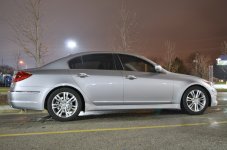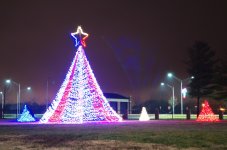Thought I'd give some night photography a stab... What am I doing wrong?
Tree photo info:
ISO 100
F 5.3
10s shutter
Car photo info:
ISO 100
F 4.1
3s shutter
The pic with the tree lights....I see an upside down purple tree in the sky...right above the little white tree on the right.
Again, my first ever night shots....be easy
Tree photo info:
ISO 100
F 5.3
10s shutter
Car photo info:
ISO 100
F 4.1
3s shutter
The pic with the tree lights....I see an upside down purple tree in the sky...right above the little white tree on the right.
Again, my first ever night shots....be easy
Attachments
Last edited:



